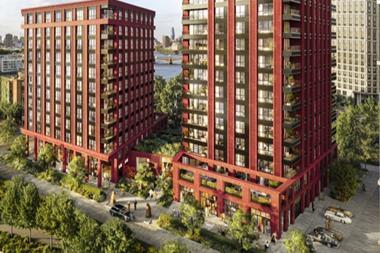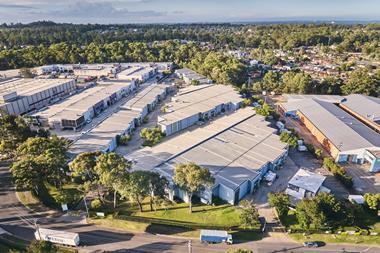
Warehouses can be seen as outliers as the real estate world races to hit not only net zero targets but also to enhance their contribution of social value to society.
A reputation for increasing vehicle use through e-commerce deliveries and, unfairly, for not creating ‘real’ or permanent jobs has left the warehouse world needing to catch up in the eyes of the environment, social and governance (ESG) agenda.
But while warehouse users may have got off to a slow start in the eyes of the ESG world, this asset class may ultimately end up as the best performer when its potential for sustainability and contribution to social value is fully realised.
It’s not as if the warehouse world’s customers – logistics groups and major retailers – haven’t already spotted the ESG potential in what they do.
For example, Walmart has a large number of solar panels on their retail rooftops. In addition, QuadReal and Wal-Mart are building a new store in Montreal, Canada that will have a 120,000+ square foot greenhouse on the roof that will sell produce locally.
Transport Intelligence, which produces sector-leading logistics and supply chain market research, has found that 72% of logistics companies have a sustainability strategy in place, and 45% have real-time visibility of the environmental impact of their supply chains.
The sustainability of supply chains is set for a rapid and widespread digitalisation in the next two years, resulting in a step change in the management of supply chain sustainability.
In the United Kingdom, Tesco has partnered with Direct Rail Services to introduce a new `cool service’ to transport goods across the country, using refrigerated rail freight to take at least 17,000 containers off the road and saving 9,000 tonnes of CO2.
So, the challenge has been set for warehouse owners and managers to play their part too.
Rooftop solar panels have barely begun to be used by the sector, and as well as generating power could also generate significant extra income for owners.
According to global real estate adviser Savills, 40% of a warehouse roof may be suitable for the installation of solar panels, 97% of the energy required by new warehouse development could be offset by energy generated by those panels.
At QuadReal’s 60 Birmingham last-mile logistics warehouse under construction in Toronto, Canada, the structure is being built so it can integrate 80% roof coverage of solar panels. At initial completion there will be 30% roof coverage of solar panels to meet the expected electricity needs of tenants.
As tenants move to greater utilization of EV delivery vehicles, their electricity needs will increase and more panels can be added.
In markets with the most solar generation such as Australia and California, extra infrastructure such as batteries to capture the energy created by solar panels will be needed to smooth out the hourly electricity supply and demand curves, as will stable connections to national power networks, but there is huge potential from the warehouse sector to decarbonise – and generate additional income.
But what about the people working in warehouses? How can we enhance their working experience?
We have teamed up with Fitwel, the world’s leading certification system committed to creating health benefits for all, which draws on expert analysis of 5,600-plus academic research studies to make buildings better places to work.
For warehouses, this has become a pressing issue as the sector has grown, with soaring rates of e-commerce around the world driving the number of people working in industrial and logistics.
The North American warehouse sector’s workforce is projected to grow by 2.7% every year until 2026 – but at the same time maintaining a stable workforce is proving a challenge.
This is a sector with the employee turnover rate within warehouses at 60% in 2020. While this may have been partly driven by the unique conditions of COVID-19 and the subsequent `Great Resignation’ it is clear that something else is amiss.
Our report with Fitwel, `A Better Box’ makes three main recommendations for warehouse management: maximise location and site accessibility, design functional and supportive interior spaces and create spaces that promote productivity and preparedness.
What does this mean in practice?
Everything from prioritising access to nature, better access to essential facilities, safe use of spaces and emergency preparedness can help warehouse occupiers to better retain top talent, reduce injury and absenteeism, increase job satisfaction and ultimately improve productivity.
For example, in one logistics development in the Czech Republic, the concept of a relaxation garden, which has a shade tree and benches, where people can go and take their breaks or eat outside, has been introduced.
Health and well-being have always been a top priority for the QuadReal team. Sustainability is also crucial as we seek to target carbon reduction of 50% by 2030 and 100% by 2050, driven initially by net zero transition plans for all our directly managed properties.
Before the pandemic, warehouses would not have been considered prime candidates for driving the ESG agenda. With the rapid growth of the sector combined with global investor appetite, it is clear that better warehouse management plays a major role.
By capitalising on their potential to generate power themselves, and with the need to make them the best possible places to work, warehouses can be big drivers of ESG for years to come.















